Digital transformation (DT) is the process by which organizations leverage digital technologies to fundamentally change how they operate, deliver value to customers, and adapt to evolving market demands. It encompasses a shift in business models, processes, and organizational culture to harness the power of technology for innovation, efficiency, and customer-centricity.
What is Digital Transformation?
Digital transformation refers to the integration of digital technologies into all areas of a business, leading to significant changes in how companies operate and deliver value. It involves more than just upgrading IT systems; it’s a strategic and cultural shift that redefines the organization’s operations, customer interactions, and business practices. The goal is to create more agile, efficient, and innovative business processes that can respond swiftly to market demands and customer needs.
Digital transformation can involve:
- Automation: Implementing tools to streamline manual processes, reduce errors, and improve productivity.
- Data Utilization: Harnessing data analytics and insights to drive decision-making, predict trends, and improve customer experiences.
- Cloud Adoption: Moving to cloud-based platforms for better flexibility, scalability, and cost efficiency.
- Customer Experience: Enhancing how customers interact with a business, using technology to provide more personalized and seamless experiences.
- Business Model Innovation: Redefining business models to leverage digital technologies, such as subscription-based services or e-commerce.
Why is Digital Transformation Important?
- Increased Efficiency: Digital technologies enable businesses to streamline operations, automate repetitive tasks, and improve resource management, leading to cost reductions and increased productivity.
- Enhanced Customer Experience: DT allows companies to better understand customer needs, provide personalized services, and offer omnichannel experiences, improving customer satisfaction and loyalty.
- Agility and Innovation: Businesses can respond more quickly to changes in the market, experiment with new business models, and innovate faster with digital tools and platforms.
- Data-Driven Decisions: With access to real-time data and analytics, organizations can make more informed decisions, optimize performance, and predict future trends.
- Competitive Advantage: Companies that embrace digital transformation can differentiate themselves from competitors by providing better services, improving operational efficiency, and staying ahead of technological trends.
Key Drivers of Digital Transformation
- Customer Expectations: Customers today expect seamless, fast, and personalized experiences across multiple digital platforms, pushing businesses to adopt digital technologies to meet these demands.
- Technological Advancements: The rapid evolution of technologies such as AI, cloud computing, big data, IoT, and blockchain has made digital transformation more achievable and impactful for organizations.
- Globalization: As businesses operate in increasingly global markets, digital tools help companies scale quickly, manage cross-border operations, and reach new customers.
- Competitive Pressure: Companies are motivated to adopt digital transformation to keep pace with competitors that are already leveraging digital technologies to improve their business models.
- Operational Challenges: Traditional business processes are often inefficient and difficult to scale. Digital transformation helps companies overcome these challenges by automating workflows and improving collaboration.
Key Components of Digital Transformation
- Technology Integration: Implementing technologies such as cloud computing, AI, data analytics, and IoT to automate processes, gather insights, and enhance decision-making.
- Cultural Change: Digital transformation requires a shift in organizational culture, where innovation, agility, and customer-centric thinking are encouraged. This often involves reskilling employees and promoting a mindset that embraces change.
- Business Model Innovation: Companies must rethink their traditional business models to incorporate digital solutions. This could involve creating new revenue streams, such as subscription services or digital platforms, or improving existing models with digital tools.
- Customer-Centricity: Putting the customer at the center of transformation efforts. This means using digital tools to understand customer needs, provide personalized experiences, and ensure seamless interactions across touchpoints.
- Data-Driven Decision Making: Leveraging data analytics and machine learning to make more informed business decisions, predict future trends, and optimize operations.
Challenges of Digital Transformation
- Resistance to Change: Employees and leadership may be hesitant to adopt new technologies or change existing workflows. Overcoming resistance and fostering a culture of innovation is crucial for successful transformatio
- Legacy Systems: Many organizations still rely on outdated systems that can be difficult to integrate with newer digital technologies. Migrating from legacy systems to modern, digital solutions can be complex and costly.
- Cybersecurity Risks: As businesses adopt more digital tools, the threat of cyberattacks increases. Ensuring robust cybersecurity practices and protecting sensitive data is a critical part of digital transformation.
- Talent Shortage: There is a significant demand for skilled professionals in areas like data science, AI, and cloud computing. Companies must invest in talent acquisition and training to fill skill gaps.
- Cost of Implementation: Digital transformation requires significant investment in technology, training, and infrastructure. Small and medium-sized businesses, in particular, may struggle with the initial costs.
Steps to Achieving Digital Transformation
- Define Clear Objectives: Start by identifying the business goals that digital transformation will address, such as improving customer experience, reducing operational costs, or increasing innovation.
- Assess Current State: Evaluate existing systems, processes, and technologies to understand the gaps and areas for improvement. This helps define the roadmap for transformation.
- Select the Right Technologies: Choose digital tools and platforms that align with the company’s needs, ensuring they integrate seamlessly with existing systems.
- Create a Digital Transformation Roadmap: Develop a strategic plan that outlines the goals, timeline, resources, and milestones for digital transformation initiatives.
- Foster a Culture of Change: Encourage innovation, collaboration, and adaptability across the organization, ensuring that all employees are aligned with the transformation vision.
- Measure and Optimize: Continuously monitor the progress of digital transformation, analyze performance metrics, and optimize strategies to improve results.
Conclusion
Digital transformation is no longer optional for businesses looking to thrive in today’s competitive, tech-driven world. By embracing digital technologies and reshaping business processes, companies can improve efficiency, foster innovation, and enhance customer experiences. However, digital transformation requires a strategic approach, investment in technology, and a shift in organizational culture to ensure lasting success.



